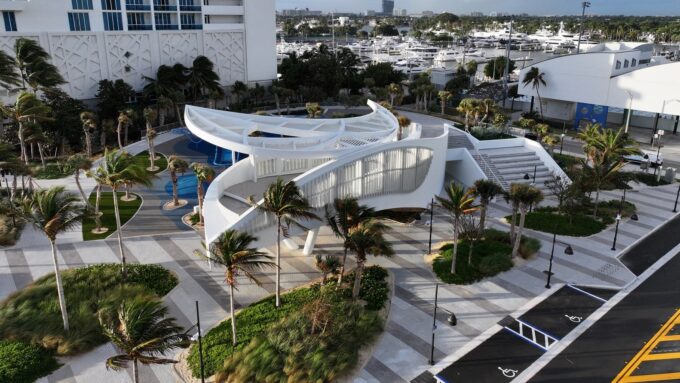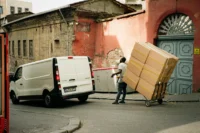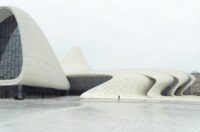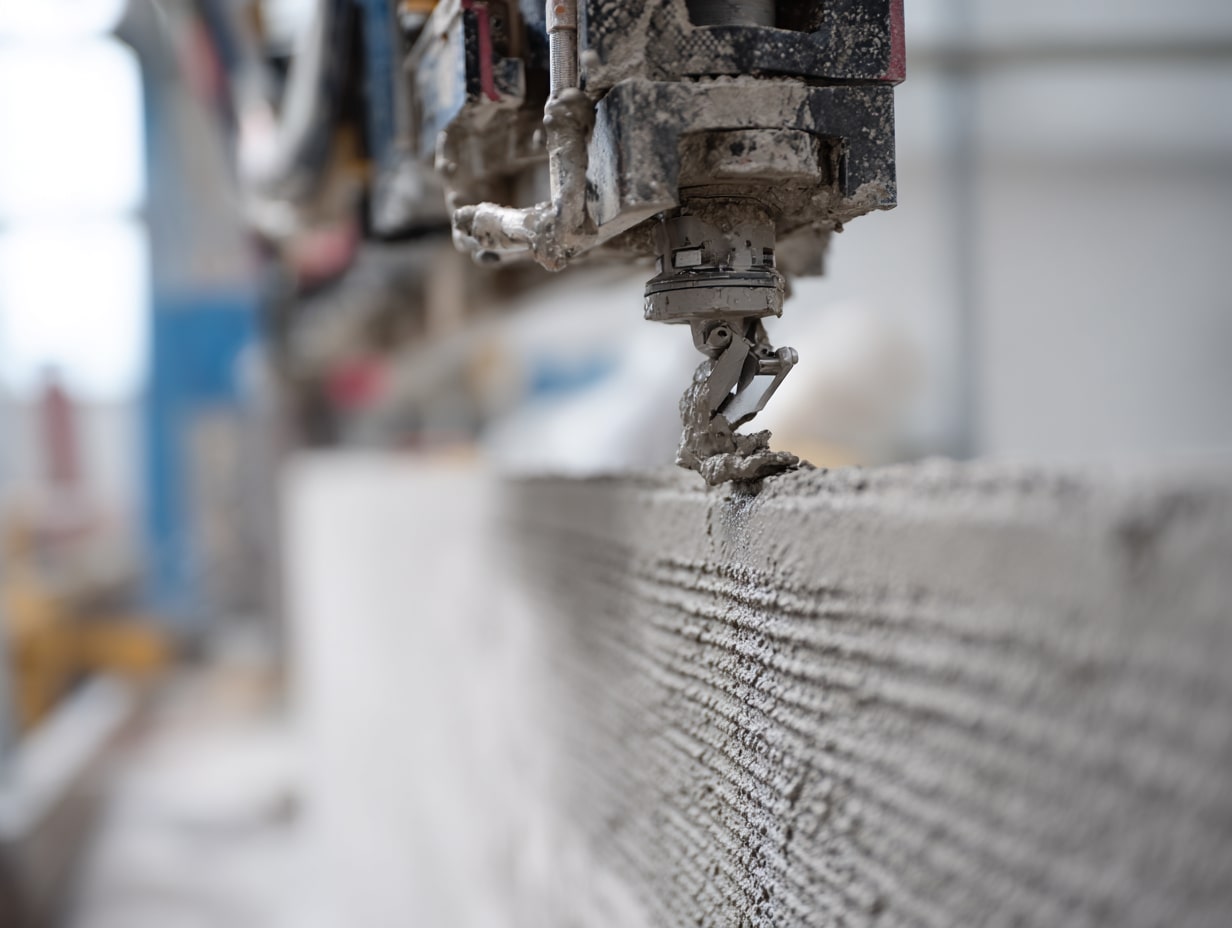- Home
- Articles
- Architectural Portfolio
- Architectral Presentation
- Inspirational Stories
- Architecture News
- Visualization
- BIM Industry
- Facade Design
- Parametric Design
- Career
- Landscape Architecture
- Construction
- Artificial Intelligence
- Sketching
- Design Softwares
- Diagrams
- Writing
- Architectural Tips
- Sustainability
- Courses
- Concept
- Technology
- History & Heritage
- Future of Architecture
- Guides & How-To
- Art & Culture
- Projects
- Interior Design
- Competitions
- Jobs
- Store
- Tools
- More
- Home
- Articles
- Architectural Portfolio
- Architectral Presentation
- Inspirational Stories
- Architecture News
- Visualization
- BIM Industry
- Facade Design
- Parametric Design
- Career
- Landscape Architecture
- Construction
- Artificial Intelligence
- Sketching
- Design Softwares
- Diagrams
- Writing
- Architectural Tips
- Sustainability
- Courses
- Concept
- Technology
- History & Heritage
- Future of Architecture
- Guides & How-To
- Art & Culture
- Projects
- Interior Design
- Competitions
- Jobs
- Store
- Tools
- More
Is the City Alive in Between All the Concrete? Discover Urban Life Beyond the Steel
Discover the hidden vibrancy of urban life in our concrete jungles. This article explores the dynamic coexistence of nature, creativity, and community amid towering buildings and bustling streets. From charming parks and street art to thriving urban gardens, learn how these elements enrich city living and foster social connections.

Cities often seem like a maze of concrete and steel, where nature struggles to find its place. Yet, amidst the towering skyscrapers and bustling streets, life thrives in unexpected ways. We might overlook the small parks, vibrant street art, and resilient flora that weave through the urban landscape, but these elements pulse with energy and character.
As we explore the hidden corners and dynamic interactions in our cities, we’ll discover that life isn’t just surviving—it’s thriving. From community gardens to spontaneous street performances, the spirit of the city reveals itself in the most surprising places. Join us as we uncover the heartbeat of urban life, hidden in the spaces between the concrete.

Table of Contents
ToggleThe Urban Jungle: Understanding City Life
Urban life pulsates beneath concrete canopies, blending elements of nature and creativity. We explore how these dynamics shape our experience in cities.

The Concept of Concrete Landscapes
Concrete landscapes refer to the expansive areas dominated by buildings, roads, and infrastructure. This term encompasses various environments, including urban parks, plazas, and public squares. Concrete environments often dictate the rhythm of life, influencing everything from transportation patterns to social interactions. Despite their starkness, these landscapes also harbor opportunities for connection and engagement, reflecting the resilience of urban communities.
The Dichotomy of Nature and Urbanization
The contrast between nature and urbanization reveals complexities in city living. Green spaces, wildlife, and urban flora coexist alongside skyscrapers and busy streets. Urban gardens, rooftop greenery, and street trees serve as vital elements in this relationship. Such features foster biodiversity and contribute to mental well-being, enhancing our quality of life. Understanding this dichotomy helps us appreciate how wildlife adapts to urban settings, creating vibrant ecosystems within city boundaries.
Hidden Life: Nature in the City
Nature thrives in urban areas, often finding a way to flourish amid concrete environments. Parks and green spaces play a crucial role in maintaining this balance.

Parks and Green Spaces
Parks and green spaces serve as essential lungs for the city, providing crucial habitats for wildlife and respite for residents. Studies show that urban parks, like Central Park in New York City or Golden Gate Park in San Francisco, not only enhance biodiversity but also improve air quality. These areas offer community members a chance to engage in recreational activities, from jogging to picnicking.
Additionally, community gardens contribute significantly to urban greenery. They foster social interaction, allowing neighbors to cultivate food and flowers, promoting urban agriculture. According to the American Community Gardening Association, over 18,000 community gardens exist in the U.S., showcasing the commitment of urban dwellers to integrate nature into city life.
Urban Wildlife
Urban wildlife enriches our cities, adapting to thrive in populated areas. Species like squirrels, pigeons, and even raccoons demonstrate remarkable resilience amidst urbanization. More than 200 species of birds often inhabit city parks, offering vibrant displays of life.
Innovations like bird-friendly building designs and wildlife corridors further support urban biodiversity. These initiatives help species navigate complex urban landscapes while ensuring their survival. Research indicates green roofs and walls can attract various insects, essential for pollination, thus enhancing our ecosystem’s health.
In our concrete cities, recognizing and nurturing hidden life enables us to foster a more inclusive and thriving urban environment.
Community and Culture in Concrete
Cities thrive on community interactions and cultural expressions that emerge even amid concrete surroundings. Public spaces and art initiatives play pivotal roles in shaping vibrant urban experiences that connect us with one another.

The Role of Public Spaces
Public spaces serve as essential hubs for community engagement. Parks, plazas, and open areas facilitate recreational activities and foster social connections. These spaces, such as Bryant Park in New York City, offer venues for events, performances, and gatherings that strengthen community bonds. Research shows that accessible public spaces can reduce social isolation and enhance well-being for urban residents.
Community-led initiatives, like neighborhood clean-up events or local festivals, further enrich public spaces, reflecting residents’ identities and values. We find that participation in these activities cultivates a sense of belonging, encourages civic involvement, and empowers individuals to take ownership of their environment. Thus, effective design and management of public spaces contribute significantly to urban vitality.
Art and Expression in Urban Environments
Art and expression in urban environments inject vibrancy into the concrete landscape. Street art, murals, and installations transform blank walls into captivating narratives that engage passersby. We see examples like the Wynwood Walls in Miami, which showcase a dynamic fusion of creativity and urban culture.
Cultural programming, such as art walks or community art projects, promotes local artists while providing platforms for their voices. These initiatives enhance our experiences and highlight diverse perspectives within the community. We can appreciate how art fosters dialogue and inspires change, making cities more inclusive and reflective of their inhabitants.
Ultimately, public spaces and artistic expressions highlight the resilience and creativity that coalesce within concrete jungles. They remind us that community and culture flourish even in the most urbanized settings.
Challenges of Urban Living
Urban living presents distinct challenges that impact daily life, shaping how we navigate our surroundings. Overpopulation strains resources, while the dominance of concrete structures creates significant environmental concerns.

Overpopulation and Infrastructure
Overpopulation leads to crowded public spaces and strained infrastructure, affecting transportation systems, housing shortages, and essential services. Urban areas like New York City and Los Angeles face intense pressure to accommodate growing populations, often resulting in limited access to affordable housing and increased commuting times. Nearly 80% of Americans now live in cities, intensifying the demand for efficient public transport systems and infrastructure improvements. To combat these issues, cities must prioritize sustainable development and invest in smart growth strategies that enhance connectivity and accessibility for residents.
Environmental Impact of Concrete
Concrete, a vital component of urban construction, contributes to several environmental challenges. Its production generates significant carbon emissions, accounting for approximately 8% of global CO2 emissions. Additionally, concrete’s impermeability leads to urban heat islands, increasing temperatures in densely built areas. Water runoff is another concern, as non-porous surfaces hinder natural drainage, resulting in localized flooding during heavy rains. Incorporating green designs, such as permeable pavement and urban forests, can mitigate these effects while promoting biodiversity and improving air quality. Through these adaptations, we can reduce the environmental impact of our urban landscapes, fostering healthier and more sustainable cities.
The Future of Urban Landscapes
Cities must adapt to ongoing changes and challenges, and we can see promising developments on the horizon. These changes aim to create healthier, more sustainable urban environments that foster life amidst concrete structures.

Sustainable Development Initiatives
Sustainable development initiatives provide essential solutions for urban areas. Green building practices increase energy efficiency, reduce waste, and lower carbon footprints. We see groups advocating for the use of renewable resources, like solar panels and wind turbines, in urban settings. Cities are transforming underutilized spaces into green areas—such as parks, green roofs, and urban farms—that enhance biodiversity while providing recreational spaces for residents.
Moreover, community-led initiatives encourage and engage residents in sustainable practices. For instance, programs promoting urban gardening help decrease food deserts and support local food systems. As cities embrace these approaches, we witness a growing trend toward incorporating nature into urban planning.
Innovations in Urban Planning
Innovations in urban planning drive the future of city landscapes. Smart city technologies improve infrastructure management through data-driven insights. These advancements enhance public transportation and optimize energy use, contributing to a more efficient urban environment.
Additionally, mixed-use developments combine residential and commercial spaces, fostering vibrant neighborhoods that reduce reliance on cars. Investments in pedestrian-friendly designs and cycling infrastructure also support healthier lifestyles and mitigate traffic congestion. Urban planners are increasingly emphasizing resilience against climate change by incorporating nature-based solutions, like rain gardens and urban wetlands, to manage stormwater and improve air quality.
By prioritizing innovation and sustainability, we can shape urban landscapes that thrive amidst concrete, ultimately creating livable cities that benefit all residents.
Conclusion
Urban life thrives despite the concrete, showcasing the interplay between nature, creativity, and community. We recognize the vibrant parks, dynamic street art, and flourishing gardens that punctuate the urban landscape, enhancing our cities’ character and vitality. Small parks and community gardens not only enrich biodiversity but also serve as social connectors, fostering interactions among residents.
Concrete landscapes shape our experiences, influencing how we navigate through urban environments. While they appear stark, they provide unique opportunities for engagement and connection that embody the resilience of urban communities. The coexistence of wildlife and green spaces within cities reminds us that life thrives in these environments, contributing positively to our overall well-being.
Parks and green areas represent the essential lungs of the city, nurturing local ecosystems and enhancing air quality. Iconic urban parks and innovative community gardens further elevate both biodiversity and the sense of community, emphasizing their critical role in urban life. By embracing urban wildlife and creating supportive habitats, we promote a richer ecological tapestry alongside urban development.
Community interactions and cultural expressions flourish amid concrete, revealing that engagement and creativity know no bounds. Public spaces act as vital arenas for connection, allowing us to celebrate our identities through local events and artistic endeavors. Transformative street art and cultural programming invite us to appreciate the narratives embedded in our surroundings, foregrounding the importance of community in urban settings.
We must also confront the challenges posed by urban living, including overpopulation and environmental strains due to concrete infrastructures. With nearly 80% of Americans residing in cities, the push for sustainable transport and improved living conditions becomes crucial. Advocating for green designs, such as urban forests and permeable surfaces, supports our commitment to healthier urban environments.
Looking forward, we witness exciting advancements in sustainable urban development that prioritize healthier lifestyles and environmental resilience. Community-driven initiatives fostering urban gardens and smart technologies shape the future of our cities, creating inclusive spaces that cater to all residents. By championing sustainability and innovation, we play a role in ensuring our cities remain vibrant and livable, even amid concrete jungles.
- cities pulses
- city adventure seekers
- city exploration guide
- city hidden treasures
- city life discoveries
- concrete jungle exploration
- discover city vibrancy
- discover urban secrets
- explore the city
- hidden city gems
- hidden city tours
- hidden urban spots
- urban adventure seekers
- urban adventure tours
- urban cultural hotspots
- urban exploration
- urban exploration adventures
- urban vibrancy
- urban vibrancy tours
- urban wonders tour
Submit your architectural projects
Follow these steps for submission your project. Submission FormLatest Posts
3D Printed Homes: Time, Cost, and What to Expect
3D printed homes explained: realistic timelines (24–72h walls, 8–16 weeks total), true...
How a Contact Centre Boosts Trust in Your Building Business
In construction, trust is the glue that holds projects together. Clients need...
How Real Time Parcel Geolocation Is Redefining Last Mile Efficiency for Modern Businesses
Last mile delivery has become the most critical point in the customer...
How Can Small Spaces Stay Stylish and Relaxing?
In today’s fast-paced urban lifestyle, small living spaces are becoming increasingly common....












Leave a comment